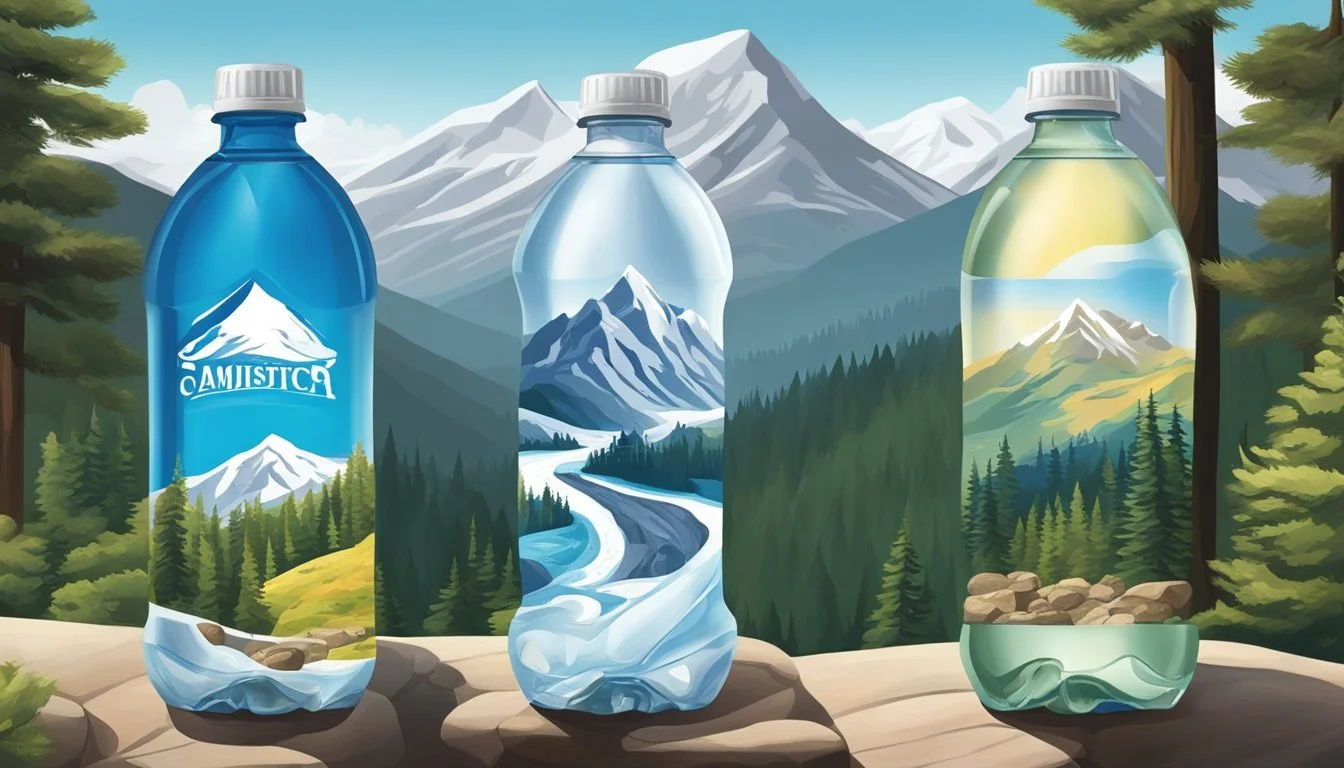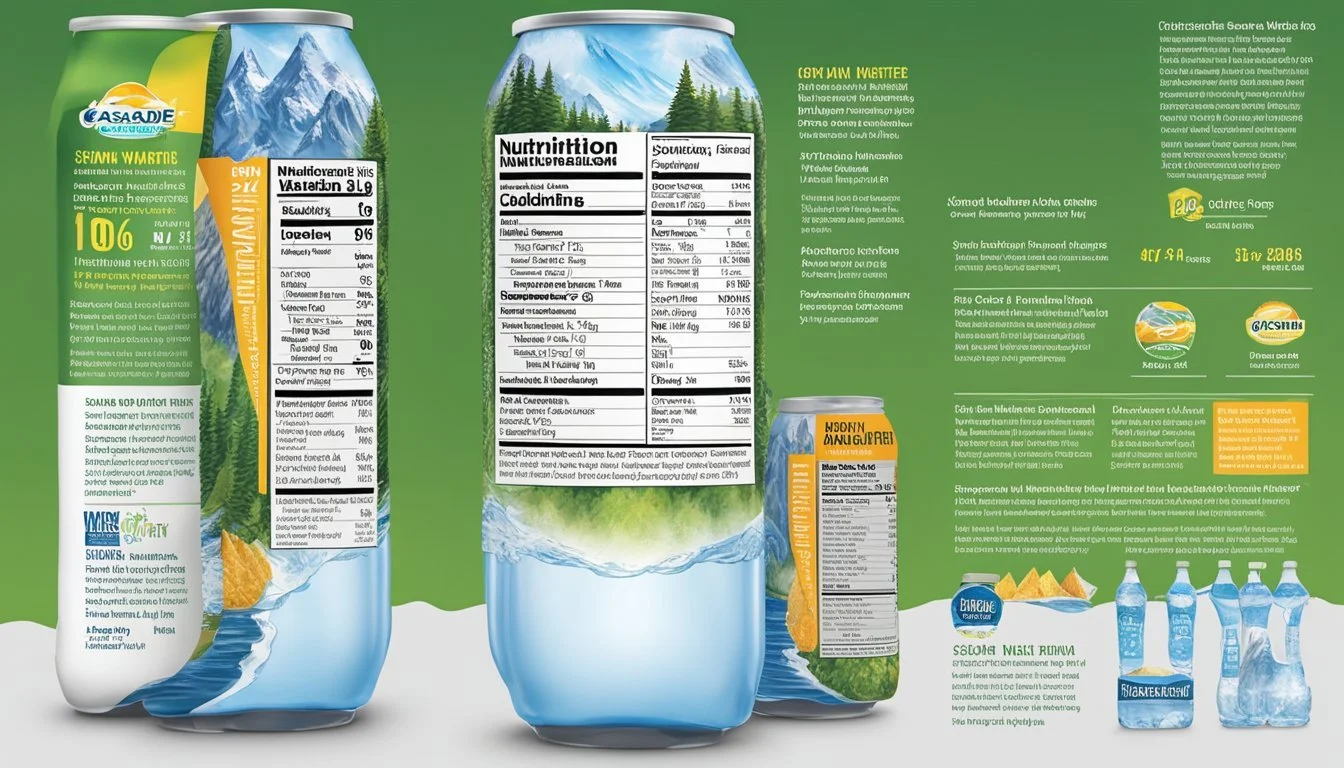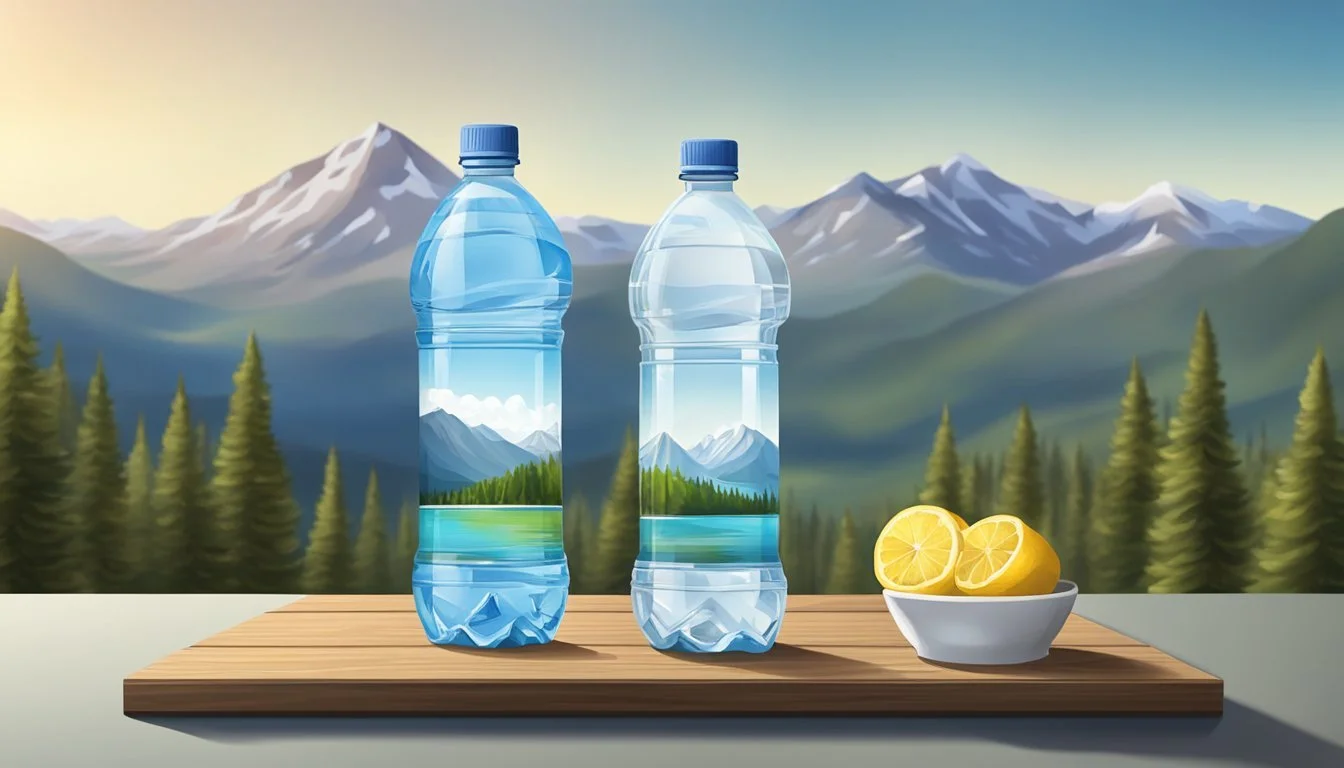Cascade Mountain vs. Big Win
Which Bottled Water is Better? A Comprehensive Comparison
When choosing between Cascade Mountain and Big Win bottled water, consumers often prioritize factors like taste, purity, and price. Cascade Mountain, sourced from pristine springs, offers a clean, mineral-rich flavor that appeals to many looking for a refreshing drink. Big Win, on the other hand, is known for its accessibility and affordability, making it a popular choice for budget-conscious shoppers.
For those who prioritize taste and quality, Cascade Mountain emerges as the superior option. Its natural spring origin imparts a naturally balanced mineral profile, providing a crisp and satisfying drinking experience. In contrast, while Big Win is a reliable and economical choice, some find its taste to be less distinct, potentially due to its purified water sources rather than natural springs.
Ultimately, the choice between Cascade Mountain and Big Win depends on what the consumer values most. Whether it's the rich, natural taste of Cascade Mountain or the practicality and price point of Big Win, both brands cater to different needs in the bottled water market.
The Importance of Hydration
Hydration is crucial for maintaining overall health. Drinking enough water helps regulate body temperature, supports digestion, and transports essential nutrients.
A lack of proper hydration can lead to dehydration, negatively impacting both physical and mental performance. Symptoms of dehydration include headaches, fatigue, and dizziness.
Key Functions of Water in the Body:
Regulates Body Temperature: Sweat production and evaporation help cool the body.
Aids Digestion: Water is essential for breaking down food.
Nutrient Transportation: Water helps carry vitamins and minerals to cells.
Daily Water Intake Recommendations:
Men: ~3.7 liters (13 cups).
Women: ~2.7 liters (9 cups).
Foods with high water content, like fruits and vegetables, also contribute to hydration. It’s not just about drinking water but consuming it in various forms.
Tips for Staying Hydrated:
Drink water regularly throughout the day.
Eat water-rich foods.
Carry a reusable water bottle.
Hydration supports overall bodily functions and helps prevent various health issues. Proper hydration should be a daily focus for everyone.
Overview of Bottled Water Industry
The bottled water industry has experienced significant growth in recent years, driven by increasing consumer concerns about water quality and health. Major brands and consumer trends are shaping the market landscape.
Leading Bottled Water Brands
Several prominent brands dominate the bottled water market. Nestlé and Coca-Cola are among the key players. Nestlé's portfolio includes popular names like Perrier and Pure Life, while Coca-Cola owns the Dasani brand. These companies compete on various fronts, including water sourcing, packaging innovations, and sustainability efforts.
Evian, another leading brand, is recognized for its premium positioning and commitment to quality. Such brands leverage their strong distribution networks to maintain market presence. Smaller brands like Cascade Mountain and Big Win are also gaining attention due to their competitive pricing and unique selling propositions.
Consumer Trends in Bottled Water Consumption
Consumers are increasingly prioritizing health and safety when selecting bottled water. The demand for sanitary packaged goods has surged, driven by concerns about contaminants in tap water. The U.S. bottled water market alone reached an estimated USD 44.6 billion in 2023.
There is also a growing preference for eco-friendly and sustainable packaging. Consumers show a willingness to pay extra for brands that offer biodegradable or recyclable bottles. Additionally, flavored and mineral-enhanced waters are seeing a rise in popularity, reflecting a trend towards products that offer additional health benefits.
Shifts in consumer behavior emphasize the need for brands to innovate continually and address evolving health and environmental criteria.
Defining Water Quality and Taste
Distinguishing high-quality bottled water involves understanding various factors such as water sources, pH levels, electrolytes, and mineral content. Each of these elements can significantly influence the taste and overall quality of the water.
Assessing Water Quality Standards
Water quality is determined by several criteria. Source is paramount; natural spring waters or artesian wells are often preferred. pH levels play a role too, with a neutral pH (around 7) being ideal for most consumers. Electrolytes like sodium, potassium, and magnesium enhance hydration and can make water more appealing.
Mineral content sets premium waters apart. Higher mineral content can indicate better quality, but excessive amounts might affect taste. Understanding these standards helps identify which bottled water offers superior quality.
Factors Affecting Water Taste
Water taste is subjective and influenced by various factors. Minerals like calcium and magnesium add subtle flavors, while electrolytes contribute to a slightly salty taste. The pH level can also alter taste; slightly alkaline water might seem smoother and less acidic.
Other elements such as source purity and filtration processes can impact taste. Naturally filtered spring water is often considered more desirable. These factors together shape the unique taste profile of bottled water, making one brand stand out from another.
Comparative Analysis of Cascade and Big Win
Both Cascade Mountain and Big Win bottled water offer unique advantages and differences. Key aspects include their sources, purification methods, taste, and potential health impacts.
Source and Origin of Cascade and Big Win
Cascade Mountain sources its water from natural springs, ensuring a pure, mineral-rich product straight from nature. Big Win, on the other hand, utilizes municipal water systems, which are then processed for purity. This fundamental difference means Cascade Mountain offers naturally filtered water, while Big Win depends on advanced purification techniques to achieve similar quality.
Purification and Filtration Processes
Cascade Mountain uses a minimal filtration process, preserving the natural minerals found in spring water. This means employing basic filtration to remove any particulates while retaining the water’s inherent qualities. Big Win adopts a more complex approach, often involving reverse osmosis and multiple stages of filtration. This rigorous process ensures contaminants are removed, resulting in a clean and safe product.
Taste Tests and Consumer Feedback
Consumers often report a marked difference in the taste between these two brands. Cascade Mountain is frequently praised for its fresh, crisp taste attributed to its natural spring origins. Big Win, produced from municipal sources and heavily filtered, provides a neutral flavor. Taste tests consistently highlight Cascade Mountain’s natural flavor profile as a significant advantage over the more processed taste of Big Win.
Health Implications of Regular Consumption
Regular consumption of Cascade Mountain water may offer health benefits due to its natural mineral content, including calcium and magnesium. Big Win water, with its municipal origins and comprehensive filtration, lacks these minerals. While it is highly pure and free of contaminants, it may not contribute additional nutrients. Consumers focused on mineral intake might prefer Cascade Mountain for its natural mineral presence.
Nutritional Breakdown
The nutritional profile of bottled water types significantly affects their health benefits and taste. Exploring the mineral content and presence of electrolytes in Cascade Mountain and Big Win provides insights into their quality and impacts on hydration.
Mineral Content Analysis
When comparing Cascade Mountain and Big Win, the mineral content stands out as a critical factor.
Cascade Mountain water, sourced from natural springs, includes a notable range of minerals. It often contains calcium and magnesium, contributing to the overall mouthfeel and slight sweetness. Calcium strengthens bones, while magnesium supports muscle and nerve functions.
Big Win bottled water, typically purified through reverse osmosis, often has fewer naturally occurring minerals. It may have added minerals like sodium and potassium to enhance taste. Sodium helps with fluid balance in the body, and potassium is essential for heart and muscle function.
Cascade Mountain:
Calcium: Contributes to bone health
Magnesium: Supports muscle and nerve functions
Big Win:
Sodium: Necessary for fluid balance
Presence of Electrolytes and Their Benefits
Electrolytes are crucial for maintaining hydration and supporting bodily functions.
Cascade Mountain includes natural electrolytes from its spring sources. These electrolytes enhance hydration efficiency. The presence of calcium and magnesium not only benefits bone and muscular health but also ensures proper water balance within cells.
Big Win often adds electrolytes during the purification process. Sodium and potassium are commonly added to improve the taste and replace lost minerals. These added electrolytes help in faster water absorption and improved muscle performance, making Big Win a popular choice for active individuals.
Cascade Mountain:
Natural electrolytes: Promote hydration
Magnesium: Improves water balance
Big Win:
Added electrolytes: Support hydration and taste
Sodium and Potassium: Aid in muscle function and fluid balance
Packaging and Environmental Considerations
Cascade Mountain and Big Win bottled waters vary considerably in their approach to packaging and environmental sustainability, impacting consumer choices.
Material and Design of Bottles
Cascade Mountain uses BPA-free plastic bottles which prioritize consumer health by avoiding harmful chemicals. These bottles are lightweight, making them convenient for on-the-go use. Their transparent design also helps consumers easily identify the product inside.
Big Win, on the other hand, offers a mix of glass and plastic bottles. The glass bottles appeal to consumers seeking a more premium feel and a product that can be easily reused. The plastic bottles from Big Win are also designed to be BPA-free, ensuring safety for the user.
Impact on the Environment and Sustainability
Cascade Mountain focuses on recyclability by using materials widely accepted in recycling programs. Their plastic bottles, while recyclable, can contribute to environmental pollution if not properly managed. Plastic production also requires significant amounts of oil and energy, adding to the carbon footprint.
Big Win’s glass bottles are more sustainable due to their reusability and lower environmental impact when recycled. Glass production, however, is energy-intensive. Their plastic bottles, like those of Cascade Mountain, face similar recycling challenges but are often recycled less frequently.
Both brands need to innovate further to reduce their environmental footprints, perhaps by encouraging consumers to recycle or reuse their bottles more frequently.
Legislation and Industry Standards
In the bottled water industry, ensuring water quality and adherence to compliance standards is paramount for consumer safety and brand credibility. Two major areas of focus are regulatory frameworks and certification processes.
Water Quality Regulations
Bottled water in the United States is primarily regulated by the U.S. Food and Drug Administration (FDA). The FDA sets stringent standards for bottled water safety, requiring routine testing for contaminants like bacteria and chemicals.
Federal regulations are bolstered by state-level standards, varying in stringency, but all aim to ensure safe drinking water. Some states implement additional stricter guidelines, providing an extra layer of protection.
The International Bottled Water Association (IBWA) also plays a pivotal role. IBWA members must adhere to the Model Code, which goes beyond federal and state mandates, incorporating measures like unannounced plant inspections.
Certifications and Compliance
Certifications are critical for brands like Cascade Mountain and Big Win, distinguishing them in a competitive market. The IBWA provides important certification, ensuring compliance with their superior quality standards.
NSF International offers another layer of certification, emphasizing independent testing and verification. Brands obtaining NSF certification demonstrate commitment to safety and quality.
State-specific certifications exist, adding another level of scrutiny. Compliance ensures that manufacturers meet or exceed established criteria, reinforcing consumer trust.
Clear labeling indicating certification marks helps consumers make informed choices. These certifications and compliance measures collectively ensure that the bottled water reaching consumers continues to be safe and of the highest quality possible.
The Bottom Line
When comparing Cascade Mountain and Big Win, several factors need consideration to determine which is the best bottled water.
Cascade Mountain garners praise for its crisp and clean taste. Coming from high-quality natural sources, it often appeals to water sommeliers and enthusiasts for its purity.
Big Win also offers a refreshing experience but tends to be more accessible due to its lower price point. It may not have the same premium taste profile as Cascade Mountain, but provides good value.
Quick Comparison
Feature Cascade Mountain Big Win Source Quality High Moderate Taste Profile Clean and Crisp Refreshing Price Higher Lower Popularity Niche Enthusiasts General Consumers
Enthusiasts who seek the best water experience tend to prefer Cascade Mountain for its superior qualities. However, for everyday hydration, Big Win remains a solid choice.








